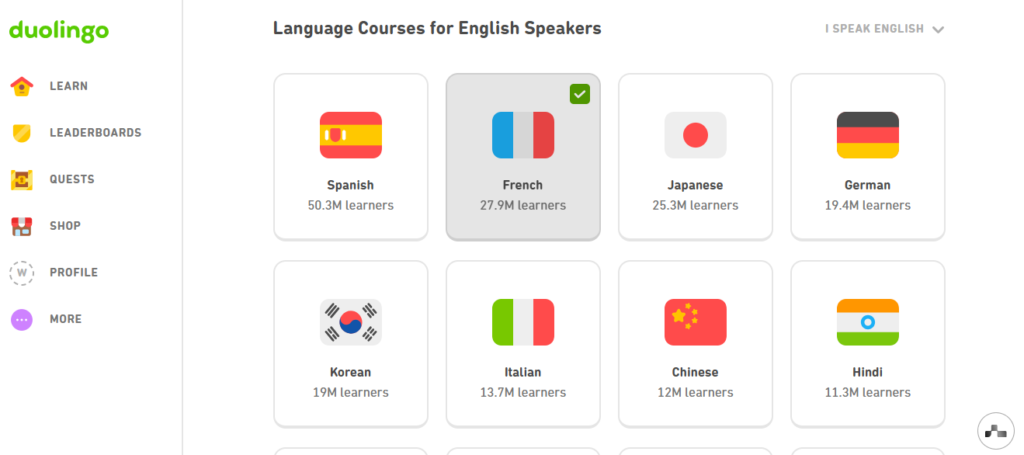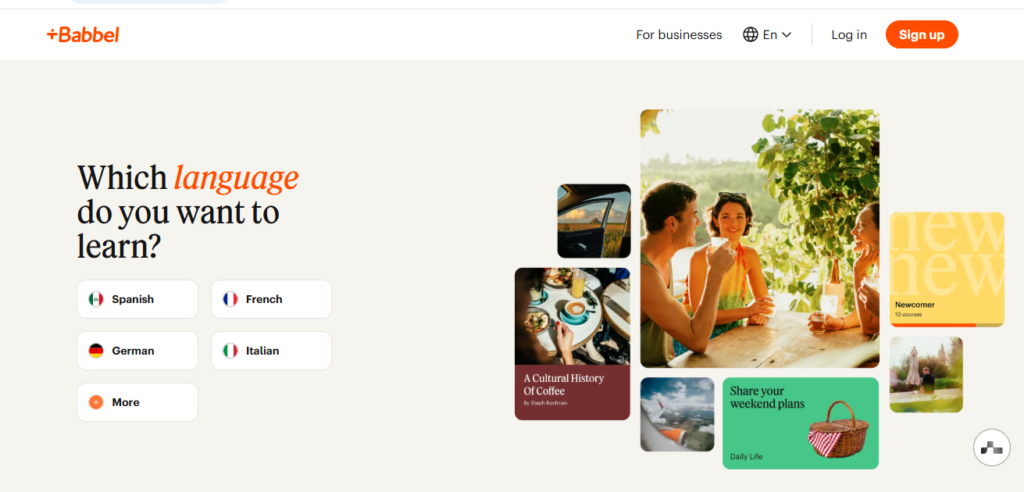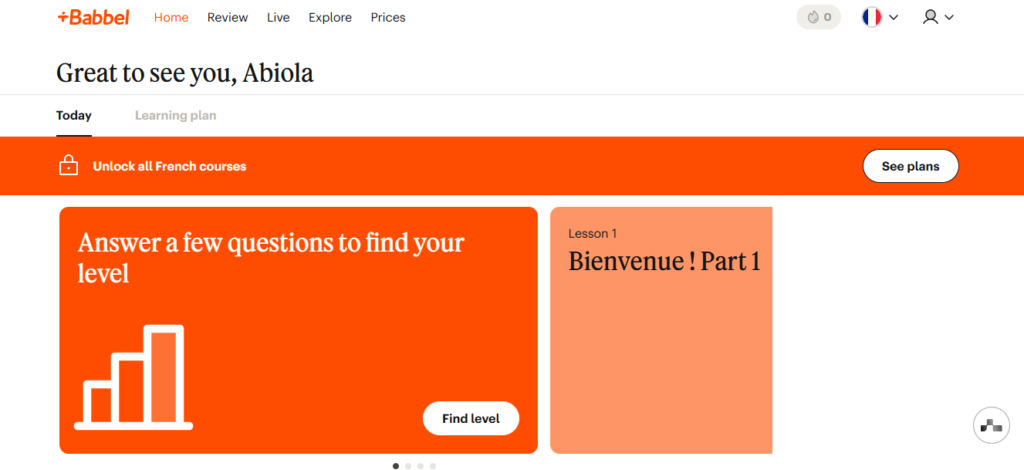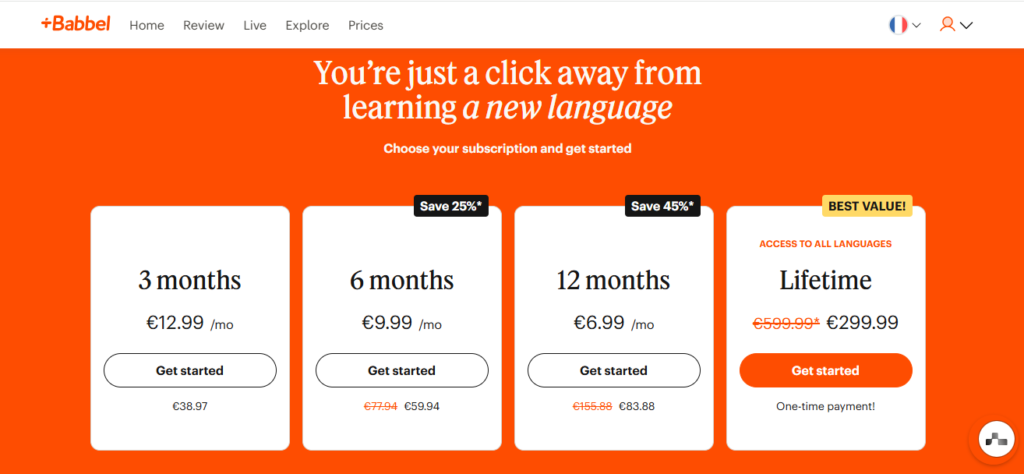By Abiola Gbolahan
Edited By Fredrick Oladipupo

By Abiola Gbolahan
Edited By Fredrick Oladipupo
Table of Contents
1. Introduction
Learning a new language has never been easier, thanks to artificial intelligence (AI). Gone are the days when you had to rely solely on textbooks or classroom lessons. Now, AI-powered apps make language learning more interactive, efficient, and even fun. Two of the most popular platforms leading this revolution are Duolingo AI vs Babbel.
Both apps use AI to enhance the learning experience, but they take different approaches. Duolingo AI is all about gamification, using bite-sized lessons and adaptive learning to keep users engaged. It adjusts exercises based on your mistakes and progress, making it feel like a fun challenge rather than a study session. Babbel, on the other hand, offers a more structured learning approach, with AI-driven speech recognition, grammar explanations, and conversation practice to help users develop real-world language skills.
So, which one is better? That’s what this guide is all about! We’ll compare Duolingo AI and Babbel based on their AI features, user experience, learning effectiveness, and pricing to help you decide which platform is the best fit for your language learning journey. Let’s dive in! 🚀
2. Overview: Duolingo AI vs Babbel
When it comes to AI-powered language learning, Duolingo AI and Babbel take very different approaches. While both platforms use artificial intelligence to enhance the learning experience, their methods, teaching styles, and target audiences are quite distinct. Let’s break it down.
2.1 Duolingo AI: Gamified Learning with AI-Driven Personalization
Duolingo AI is designed to make language learning fun, engaging, and accessible to everyone. It uses a gamified approach, where users earn points, unlock levels, and maintain streaks by completing short, interactive lessons. The app’s AI continuously adapts to your progress, identifying weak areas and adjusting exercises accordingly.

One of the standout features of Duolingo AI is its bite-sized lessons, which are perfect for learners who want to squeeze in a few minutes of practice daily. The AI-powered system provides real-time feedback, speech recognition exercises, and even chatbot conversations to help improve pronunciation and comprehension.
However, since Duolingo focuses heavily on gamification, it may not be the best choice for those who prefer deep grammar explanations or structured lessons. While the app does introduce grammar concepts, it does so in a more implicit way rather than through detailed lessons.

✅ Best for: Casual learners, beginners, and those who enjoy a fun, game-like approach to language learning.
❌ Not ideal for: Advanced learners or those who prefer in-depth grammar and structured lessons.
2.2 Babbel: Structured Lessons with AI-Enhanced Language Immersion
Unlike Duolingo, Babbel follows a more structured and traditional approach to language learning, making it a great choice for learners who want a well-organized curriculum. Babbel’s AI is used to enhance various aspects of the learning process, such as speech recognition for pronunciation, grammar explanations, and personalized lesson recommendations.

One of Babbel’s strengths is its focus on real-world conversations. Instead of just learning vocabulary in isolation, Babbel structures its lessons to help learners understand how words and phrases are used in everyday communication. This approach ensures that users develop practical language skills rather than just memorizing words and phrases.
Additionally, Babbel offers grammar-focused exercises, cultural insights, and spaced repetition techniques to help learners retain what they’ve studied. While it may not be as entertaining as Duolingo, it provides a more comprehensive learning experience for those serious about mastering a language.

✅ Best for: Learners who prefer structured lessons, detailed grammar explanations, and practical conversation practice.
❌ Not ideal for: Those looking for a free learning platform or a gamified experience.
2.3 Who Should Use Each Platform?
Choosing between Duolingo AI and Babbel depends on your learning style, goals, and level of commitment.
- If you enjoy learning through fun, interactive games and want a free, casual way to practice a language daily → Duolingo AI is your best bet. It’s great for beginners, kids, and anyone who likes a playful approach.
- If you prefer structured lessons, grammar explanations, and real-world conversation practice → Babbel is the better choice. It’s ideal for learners who want a more in-depth and professional learning experience.
3. Features Comparison: Duolingo AI vs Babbel
The table below highlights how Duolingo AI and Babbel utilize AI to enhance the language learning experience across different areas.
| Feature | Duolingo AI | Babbel |
|---|---|---|
| Adaptive Learning | Uses AI to track progress and adjust lessons based on mistakes. | AI personalizes lesson recommendations based on user performance and progress. |
| Speech Recognition & Pronunciation Feedback | Basic AI-powered speech recognition, but accuracy can be inconsistent. | More advanced speech recognition with AI-driven pronunciation feedback. |
| Grammar and Contextual Learning | Limited explicit grammar explanations; relies more on immersion and repetition. | AI-enhanced grammar explanations and contextual learning within structured lessons. |
| Chatbots & Conversation Practice | AI-powered chatbots help simulate real-world interactions. | AI-driven dialogues and interactive exercises for better conversational practice. |
4. User Experience and Learning Effectiveness
How enjoyable and effective a language-learning app is depends on its design, engagement strategies, and how well it tracks your progress. Here’s how Duolingo AI and Babbel compare in terms of user experience.
4.1 Ease of Use 🖥️
Both apps are easy to use, but their layouts feel quite different. Duolingo AI has a bright, playful design with a simple interface that makes navigation effortless. Lessons are short and interactive, perfect for quick learning sessions. Babbel, on the other hand, has a more professional, structured design. It guides users through step-by-step lessons, making it ideal for those who prefer a clear and organized learning path.
4.2 Motivation & Engagement 🎯
Duolingo makes learning feel like a game. With streaks, badges, and rewards, it keeps users motivated to come back daily. This approach works well for casual learners who need an extra push to stay consistent. Babbel, however, focuses more on structured lessons and real-world conversation practice. It doesn’t have flashy rewards, but it keeps learners engaged by offering practical language skills and cultural insights. If you love gamification, Duolingo is the winner. If you prefer meaningful, in-depth learning, Babbel is the better fit.
4.3 Progress Tracking & Reports 📊
Both apps track your progress, but in different ways. Duolingo AI provides instant feedback and adjusts lessons based on your mistakes, making it easy to see where you need improvement. Babbel goes a step further with detailed AI-driven reports, showing how well you’re retaining vocabulary and improving fluency over time. If you want quick visual progress updates, Duolingo is great. But if you prefer detailed learning insights, Babbel has the edge.
5. Pros and Cons: Duolingo AI vs Babbel
✅ Duolingo AI
| Pros 😊 | Cons 😕 |
|---|---|
| Fun and gamified approach keeps learners engaged. | Not ideal for advanced learners, as lessons are often repetitive. |
| AI adapts to learning speed and suggests exercises accordingly. | Speech recognition can be inaccurate, leading to incorrect feedback. |
| Free plan available with multiple languages. | Minimal grammar explanations, which may not suit serious learners. |
| Instant feedback and progress tracking for motivation. | Limited offline access, requiring internet for most features. |
✅ Babbel
| Pros 😊 | Cons 😕 |
|---|---|
| More structured and comprehensive lessons for in-depth learning. | No free plan, making it less accessible for casual learners. |
| Better real-world conversation practice with AI-driven dialogues. | Slower progression compared to Duolingo’s quick lessons. |
| Grammar explanations and cultural insights enhance understanding. | Lacks gamification, which may make learning feel less engaging. |
| Offline mode available, making it convenient for on-the-go learning. | Fewer languages available compared to Duolingo. |
6. Pricing and Subscription Plans
Cost is an important factor when choosing a language-learning platform. Duolingo AI and Babbel take different approaches to pricing, with one offering a free version and the other relying entirely on paid subscriptions.
6.1 Duolingo AI: Free vs. Super Duolingo
Duolingo AI provides a completely free version, making it one of the most accessible language-learning platforms. The free plan includes access to all courses but comes with ads, limited AI-driven practice sessions, and a heart-based system that restricts learning when too many mistakes are made.

For users who want an ad-free experience and additional benefits, Duolingo offers Super Duolingo. This premium version includes unlimited mistakes, faster AI-powered learning, offline access, and personalized practice. It costs around $6.99 per month when billed annually, making it an affordable option for learners who want extra features without breaking the bank.
6.2 Babbel: Various Paid Plans with No Free Version
Unlike Duolingo, Babbel does not offer a free plan. Instead, it follows a paid subscription model with multiple pricing tiers. The cost depends on the length of the subscription, with longer plans offering better value:

- 3 months: $38.97 ($12.99/month)
- 6 months: $59.94 ($9.99/month)
- 12 months: $83.88 ($6.99/month)
- Lifetime: $299.99 ( One time payment)
For those committed to long-term learning, Babbel also offers a lifetime subscription, providing access to all language courses for a one-time payment. While this makes Babbel more expensive upfront, it offers structured lessons, AI-driven grammar explanations, and real-world conversation practice, making it a valuable investment for serious learners.
6.3 Which One Offers Better Value for Money?
If you’re looking for a completely free way to learn a language, Duolingo AI is the clear winner. Its free plan is effective for casual learners, and even the paid version remains affordable compared to Babbel. However, Babbel provides more structured, in-depth lessons, making it the better choice for learners who want high-quality content and real-world language practice.
At the end, Duolingo AI is ideal for budget-conscious learners who prefer a fun, gamified approach, while Babbel offers better value for those serious about mastering a language.
7. Which Platform is Best for You?
Choosing between Duolingo AI vs Babbel really depends on how you like to learn and what you hope to achieve. If you’re just starting out or want a fun, low-pressure way to learn, Duolingo AI is a great choice. The gamified approach makes learning feel more like a daily habit than a serious study session. It’s perfect for casual learners who enjoy quick lessons and don’t need deep grammar explanations.
However, if you’re looking for a more structured and immersive learning experience, Babbel is the better option. It’s designed for people who want to go beyond basic vocabulary and actually learn how to use a language in real-world conversations. The lessons are well-organized and more in-depth, making Babbel ideal for serious learners who are committed to fluency.
At the end of the day, the best choice depends on your personal learning style. If you prefer fun, bite-sized lessons to stay motivated, Duolingo AI is the way to go. But if you want to build strong language skills with structured lessons and real-world practice, Babbel will give you better results.
8. Conclusion: Duolingo AI vs Babbel
AI-driven language learning has transformed how people acquire new languages, and both Duolingo AI and Babbel offer unique approaches to this experience. Duolingo AI is perfect for casual learners who enjoy gamified lessons and want a free, engaging way to build vocabulary and practice daily. On the other hand, Babbel is ideal for those who prefer structured lessons, real-world conversation practice, and in-depth grammar explanations.
If you’re just starting and want a fun, interactive platform with AI-driven personalization, Duolingo AI is a great choice. But if your goal is to develop strong communication skills and master a language through structured lessons, Babbel is the better option.
The best way to find the right platform is to try both and see which one works best for you. If you enjoy a fun, game-like approach, Duolingo AI might be the perfect fit. But if you prefer a more structured and immersive learning experience, Babbel could be the better choice. No matter which one you pick, AI-powered language learning is making it easier than ever to learn a new language in a way that suits your style.
Looking for more AI comparisons? Check out these posts:
- The Best AI Chatbot for Sales and Support Automation: Freshchat AI vs Drift – See which AI chatbot can streamline customer service and boost sales.
- Best AI Recommendation Engine for Product Upselling: Nosto vs Dynamic Yield – Find out which AI tool is better for personalized product recommendations.
- Khanmigo (Khan Academy AI) vs Quizlet AI: Which is Better for Personalized Learning? – A deep dive into AI-powered learning assistants.
- Writesonic vs Copy.ai: Best AI Tool for Copywriting and Ad Creation – Explore the best AI tool for writing engaging marketing content.
- Runway vs Pictory: Best AI Tool for Video Editing and Content Generation – Discover which AI video tool offers the best editing and automation features.


